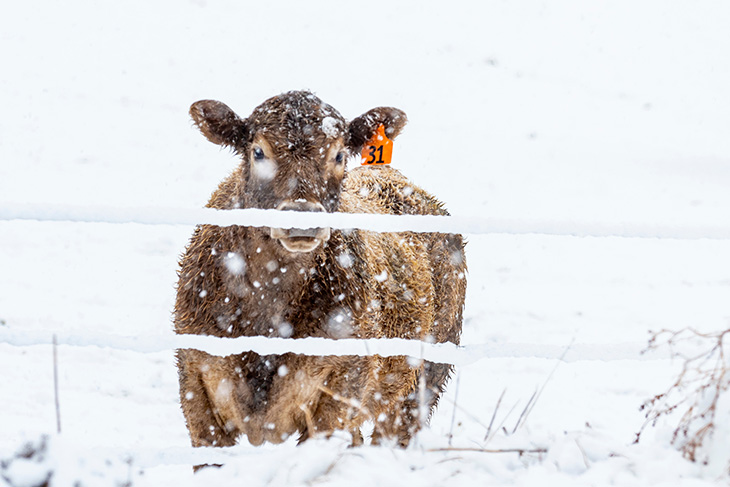
Mark Johnson, Oklahoma State University Extension Beef Cattle Breeding Specialist, offers herd health advice as part of the weekly series known as the “Cow Calf Corner” published electronically by Dr. Peel, Mark Johnson, and Paul Beck. Today, Johnson is talking about elements to consider in cattle producer’s management practices in the winter.
We have been blessed in many parts of the state with recent moisture yet most of Oklahoma remains in various degrees of drought. Fortunately, the winter has been mild to this point and as we move closer to spring, this week my article addresses a winter checklist of management practices in preparation for the future.
- Target weights on replacement heifers. In a typical year with good wheat pasture, getting our replacement heifers to target weights by the beginning of spring breeding season can be effortless. This year is an exception. With this in mind, remember the following rule of thumb, replacement heifers should be at two-thirds of their mature weight by 14 – 15 months of age at the beginning of your intended breeding season. Over 90% of heifers accomplishing this target weight, at this age will be sexually mature and capable of conceiving in time to calve by two years of age. If your heifers are behind schedule, there is still time to adapt your feeding plan so that heifers reach target weight by breeding season. Determining the expected mature weight can be accomplished by weighing the four to seven year old cows that produced your replacement heifers.
- Supplemental feeding, mineral and protein supplementation is likely more important than ever as we feed non-traditional hays. Feedback from producers indicate tremendous variation in type and quality of hays fed this year. With this in mind, mineral, energy and protein should be provided at adequate levels to have cows (and heifers) at optimum Body Condition Score (BCS) by beginning of calving season to insure timely breed back. It is more efficient to put condition on dry cows than lactating cows. Optimum BCS for mature cows is 5 – 5.5. Heifers should be at 5.5 – 6 by the start of calving season. It is well documented that reproduction will suffer if cows are too thin at calving.
- Preventing wheat pasture bloat. Many producers may be turning out on wheat pasture for the first time in the near future. Managing stocking rates as well as the use monensin and poloxalene should be considered. Review Dr. Paul Beck’s article in the 2/06/23 Cow-calf Corner Newsletter for more details.
- Deworming can sometimes be the least expensive feed. If feed is scarce and cows are thin, review the last time your cowherd was dewormed. Deworming now could lead to more efficient use of feedstuffs.
- Be prepared for cold weather calving. The mild dry winter has been optimum for calving to this point. That being the case, we have several more weeks of potential for cold weather and winter storms.
References:
Development of Replacement Beef Heifers. Chapter 29. OSU Beef Cattle Manual, eight edition.
Watch Out for Wheat Pasture Bloat. Dr. Paul Beck. Cow-Calf Corner Newsletter. February 6, 2023.















